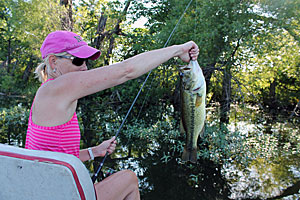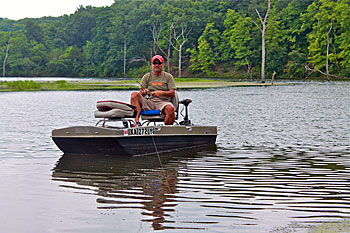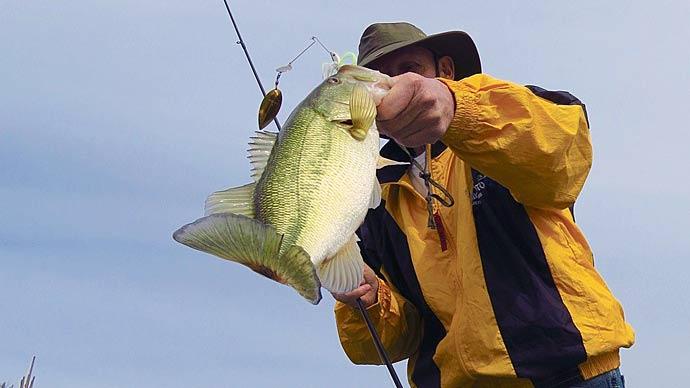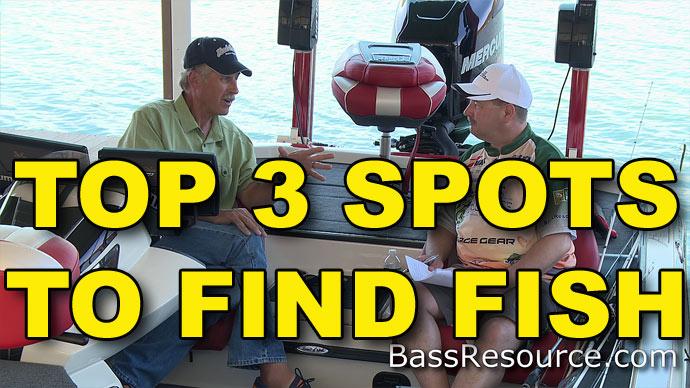
Anglers are itching to get on the water this time of year after a prolonged winter. You can’t blame them. In many parts of the country, though, winter has not yet decided to relinquish its icy, cold grip. Unexpected spring snowstorms and cold spring rains have a way of dampening our spirits and expectations. But true to Mother Nature’s modus operandi, these unexpected events are typically followed by several days of delightful weather that gives diehard anglers hope.
Large bodies of water we’re accustomed to fishing throughout the year take time to warm up, especially when the weather and temperature are inconsistent. But small lakes, gravel pits, and farm ponds quickly absorb the spring sunshine that jumpstarts the food chain on these smaller bodies of water. A few days of t-shirt weather will have small-water bass on the feed while fish in larger lakes still feel the lethargy of winter.
Because of their size, small lakes and shallow ponds warm up quicker in the spring, and residents take note by moving shallow and bellying up to the dinner table. A few days of consistent weather and sunshine will have largemouths migrating into shallow bays and coves and sideling up to stumps, docks, rocks, laydowns, and grass that soak up the spring sunshine. South-facing shorelines that absorb the sun’s rays may see water temperatures rise several degrees in a day. As water temperatures rise, so does bass metabolism.
After a winter fast, bass are not real picky about what they want to eat. They want to eat whether crawfish, frogs, baitfish, panfish, or insects. That’s good for anglers. As long as it looks like something edible, a hungry bass is likely to eat it. Because of this, there are a plethora of lures that will produce in small-water situations. Plastics like flukes, Senkos, and Crawbugs will all catch their share of bass. Add a few small crankbaits to your arsenal to cover a little deeper water, and you’re set.
Two common food sources on small lakes and ponds are crayfish and bluegills or sunfish. Both gravitate to the shallows in early spring, and the bass are on their heels. Because of this bounty of forage, plastics in crawdad colors are hard to beat. Crankbaits that feature an orange belly and a bluegill pattern excel, too. A contradiction to this is flukes and Senkos in pearl or even pink. Nothing in these bodies of water closely resemble these lures, but bass thrash them.
Frogs are common around ponds, and as they stir from their winter doldrums, they become available to small-water bass. Pitching topwater baits that imitate frogs can be great fun once the water warms into the 60s and above.

Two traits necessary for an angler to succeed on small bodies of water are patience and stealth. Most bass anglers fish by running and gunning and cover as much water as they can in a single outing. Because there’s less water to fish and opportunities are limited on ponds and small lakes, you need to slow down and observe before launching a headlong attack. Before you even make a cast, you must analyze the water body. Look to the shallows for any signs of feeding activity or cruising bass. Prime structure may be scarce on small waters, so identify it and devise a plan to fish it most effectively. If you’re on foot, slink up to the water’s edge and observe. Walk softly, keep low and wear drab colors. Bass in the skinny water will be alert and on edge. Come stomping up to the edge of the water, and you’re likely to see a lot of V-shaped wakes headed for deeper water.
Pay particular attention to the face of dams and where creeks enter the lake or pond. Both are prime locations for bass patrolling the shoreline.
Although fishing from shore is always an option on small waters, a vessel of some sort can tremendously aid the amount of water you can cover and fish effectively. Many times shorelines are overgrown and impossible to fish from shore. Or there are clearings or openings where everyone fishes. But with a kayak, float tube, pontoon, or bass tub, you can effectively work the edges from deep water and avoid spooking fish in the shallows. Being in watercraft of some kind gives you the option of working the edges of the lake or pond from shallow to deep or paralleling the bank or drop-off where the bulk of activity is going to be found early in the season.
Pay special attention to prominent structures on small bodies of water because they will be at a premium and likely hold several good fish. With limited weed growth this time of year, the physical structure becomes, even more inviting for bass. Resist the temptation to make your first cast to visible structure the ultimate cast. It will be pretty obvious where a big bass is likely to be holding, but making successive casts to secondary holding positions will often allow you to catch several fish from one piece of structure before going for the whole enchilada.
One big stump may only hold one bass, but several smaller stumps could hold a whole school. Likewise, bass may be positioned the length of a lay-down from shallow to deep, but don’t make your first cast into the shallows and chance spooking every bass. Work the deep end first and work your way down the treetop.
Think about stealth when rigging and presenting lures. You often want to have the lure enter the water quietly to avoid spooking edgy bass in the shallows. Casting up onto the bank, when snags aren’t a problem, and gently pulling the lure into the water can result in explosive strikes. It’s not uncommon to see wakes on a beeline to your bait after executing a stealthy cast. Fishing the shallows requires little weight on the lure, mainly when using plastics.
Clear monofilament or fluorocarbons are good choices when targeting small ponds and lakes. You’re not likely to find giant bass in a small body of water, but more than one angler has been surprised and thrilled by a brute of a bass that most thought wasn’t possible from such a small body of water. Even when using 8- or 10-pound test line, you can easily land big bass if you’re patient. Light lines work best on spinning tackle. It can pay to have two spinning rods rigged with slightly different lures, so if a bass shows interest but doesn’t eat, you can quickly show them another entry.
Many bass anglers are diehard catch-and-release advocates, but small ponds and lakes can quickly become overpopulated and eat themselves out of house and home. If you don’t see many small bluegills, it may be a sign that the lake has reached its carrying capacity. If a lake you fish regularly produces tons of 12- to 14-inch bass, don’t be afraid to keep a few. Smaller bass are pretty good eating. It’s probably the best thing you could do for that particular body of water.
With portable watercraft, it’s easy to hit several small ponds or lakes during a day’s fishing. Chances are, if one isn’t producing, another will be. That, and the fact that you’re not likely to have much competition, is the beauty of fishing in small lakes and ponds.




